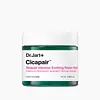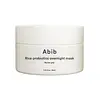What's inside
What's inside
 Key Ingredients
Key Ingredients

 Benefits
Benefits

 Concerns
Concerns

No concerns
 Ingredients Side-by-side
Ingredients Side-by-side

Water
Skin ConditioningDipropylene Glycol
HumectantPropanediol
SolventCaprylyl Methicone
Skin ConditioningVinyldimethicone
Niacinamide
SmoothingCetyl Dimethicone
EmollientTrehalose
Humectant1,2-Hexanediol
Skin ConditioningDimethiconol
EmollientCaprylyl Glycol
EmollientPullulan
Theobroma Cacao Extract
Skin ConditioningCentella Asiatica Leaf Extract
Skin ConditioningGlycerin
HumectantAllantoin
Skin ConditioningAsiaticoside
AntioxidantMadecassic Acid
Skin ConditioningAsiatic Acid
Skin ConditioningAdenosine
Skin ConditioningButylene Glycol
HumectantPolyglyceryl-4 Oleate
EmulsifyingSodium Stearoyl Glutamate
CleansingPalmitoyl Tripeptide-8
Skin ConditioningSodium Acrylate/Sodium Acryloyldimethyl Taurate Copolymer
Emulsion StabilisingAcrylates/C10-30 Alkyl Acrylate Crosspolymer
Emulsion StabilisingAmmonium Acryloyldimethyltaurate/Vp Copolymer
Dehydroxanthan Gum
Emulsion StabilisingTromethamine
BufferingPolyisobutene
Isopentyldiol
HumectantCaprylyl/Capryl Glucoside
CleansingSorbitan Oleate
EmulsifyingSodium Surfactin
CleansingDextrin
AbsorbentDextran
Disodium EDTA
CI 42090
Cosmetic ColorantCI 19140
Cosmetic ColorantWater, Dipropylene Glycol, Propanediol, Caprylyl Methicone, Vinyldimethicone, Niacinamide, Cetyl Dimethicone, Trehalose, 1,2-Hexanediol, Dimethiconol, Caprylyl Glycol, Pullulan, Theobroma Cacao Extract, Centella Asiatica Leaf Extract, Glycerin, Allantoin, Asiaticoside, Madecassic Acid, Asiatic Acid, Adenosine, Butylene Glycol, Polyglyceryl-4 Oleate, Sodium Stearoyl Glutamate, Palmitoyl Tripeptide-8, Sodium Acrylate/Sodium Acryloyldimethyl Taurate Copolymer, Acrylates/C10-30 Alkyl Acrylate Crosspolymer, Ammonium Acryloyldimethyltaurate/Vp Copolymer, Dehydroxanthan Gum, Tromethamine, Polyisobutene, Isopentyldiol, Caprylyl/Capryl Glucoside, Sorbitan Oleate, Sodium Surfactin, Dextrin, Dextran, Disodium EDTA, CI 42090, CI 19140
Water
Skin ConditioningDipropylene Glycol
HumectantGlycerin
HumectantGlyceryl Polymethacrylate
Lactobacillus/Rice Ferment
Skin Conditioning1,2-Hexanediol
Skin ConditioningDiglycerin
HumectantAmmonium Acryloyldimethyltaurate/Vp Copolymer
Oryza Sativa Bran Extract
Skin ConditioningAcrylates/C10-30 Alkyl Acrylate Crosspolymer
Emulsion StabilisingTromethamine
BufferingSaccharomyces/Rice Bran Ferment
HumectantEthylhexylglycerin
Skin ConditioningAdenosine
Skin ConditioningSodium Hyaluronate
HumectantAllantoin
Skin ConditioningDisodium EDTA
Water, Dipropylene Glycol, Glycerin, Glyceryl Polymethacrylate, Lactobacillus/Rice Ferment, 1,2-Hexanediol, Diglycerin, Ammonium Acryloyldimethyltaurate/Vp Copolymer, Oryza Sativa Bran Extract, Acrylates/C10-30 Alkyl Acrylate Crosspolymer, Tromethamine, Saccharomyces/Rice Bran Ferment, Ethylhexylglycerin, Adenosine, Sodium Hyaluronate, Allantoin, Disodium EDTA
 Reviews
Reviews

Ingredients Explained
These ingredients are found in both products.
Ingredients higher up in an ingredient list are typically present in a larger amount.
1,2-Hexanediol is a synthetic liquid and another multi-functional powerhouse.
It is a:
- Humectant, drawing moisture into the skin
- Emollient, helping to soften skin
- Solvent, dispersing and stabilizing formulas
- Preservative booster, enhancing the antimicrobial activity of other preservatives
Acrylates/C10-30 Alkyl Acrylate Crosspolymer is a synthetic polymer. It is used to thicken and improve the texture of products. Due to its properties, it can prevent water and oil ingredients from separating.
Adenosine is in every living organism. It is one of four components in nucleic acids that helps store our DNA.
Adenosine has many benefits when used. These benefits include hydrating the skin, smoothing skin, and reducing wrinkles. Once applied, adenosine increases collagen production. It also helps with improving firmness and tissue repair.
Studies have found adenosine may also help with wound healing.
In skincare products, Adenosine is usually derived from yeast.
Learn more about AdenosineAllantoin is a soothing ingredient known for its protective and moisturizingg properties. Because of this, it is often added to products with strong active ingredients.
Studies show higher concentrations of this ingredient can promote wound healing.
Though it can be derived from the comfrey plant, allantoin is produced synthetically for cosmetic products to ensure purity.
Learn more about AllantoinAmmonium Acryloyldimethyltaurate/Vp Copolymer (let's call it AAVC for short) is a synthetically created polymer. It's used as a film-forming agent and used to thicken the consistency of products.
AAVC is able to increase the consistency and viscosity of products due to its large molecule size. It also prevents ingredients from separating.
Dipropylene Glycol is a synthetically created humectant, stabilizer, and solvent.
This ingredient helps:
Dipropylene glycol is technically an alcohol, but it belongs to the glycol family (often considered part of the ‘good’ alcohols). This means it is hydrating and gentle on skin unlike drying solvent alcohols like denatured alcohol.
As a masking agent, Dipropylene Glycol can be used to cover the smell of other ingredients. However, it does not have a scent.
Studies show Dipropylene Glycol is considered safe to use in skincare.
Learn more about Dipropylene GlycolDisodium EDTA plays a role in making products more stable by aiding other preservatives.
It is a chelating agent, meaning it neutralizes metal ions that may be found in a product.
Disodium EDTA is a salt of edetic acid and is found to be safe in cosmetic ingredients.
Learn more about Disodium EDTAGlycerin is already naturally found in your skin. It helps moisturize and protect your skin.
A study from 2016 found glycerin to be more effective as a humectant than AHAs and hyaluronic acid.
As a humectant, it helps the skin stay hydrated by pulling moisture to your skin. The low molecular weight of glycerin allows it to pull moisture into the deeper layers of your skin.
Hydrated skin improves your skin barrier; Your skin barrier helps protect against irritants and bacteria.
Glycerin has also been found to have antimicrobial and antiviral properties. Due to these properties, glycerin is often used in wound and burn treatments.
In cosmetics, glycerin is usually derived from plants such as soybean or palm. However, it can also be sourced from animals, such as tallow or animal fat.
This ingredient is organic, colorless, odorless, and non-toxic.
Glycerin is the name for this ingredient in American English. British English uses Glycerol/Glycerine.
Learn more about GlycerinTromethamine helps balance the pH and improve the texture of a product. It is synthetically created.
As an emulsifier, Tromethamine prevents oil and water ingredients from separating. This helps stabilize the product and elongate a product's shelf life. Tromethamine also makes a product thicker.
Tromethamine helps balance the pH level of a product. Normal pH level of skin is slightly acidic (~4.75-5.5). The acidity of our skin is maintained by our glands and skin biome. Being slightly acidic allows our skin to create an "acid mantle". This acid mantle is a thin barrier that protects our skin from bacteria and contaminants.
Oral Tromethanmine is an anti-inflammatory drug but plays the role of masking, adding fragrance, and/or balancing pH in skincare.
1,3-Propanediol, 2-amino-2-(hydroxymethyl)-
Learn more about TromethamineWater. It's the most common cosmetic ingredient of all. You'll usually see it at the top of ingredient lists, meaning that it makes up the largest part of the product.
So why is it so popular? Water most often acts as a solvent - this means that it helps dissolve other ingredients into the formulation.
You'll also recognize water as that liquid we all need to stay alive. If you see this, drink a glass of water. Stay hydrated!
Learn more about Water